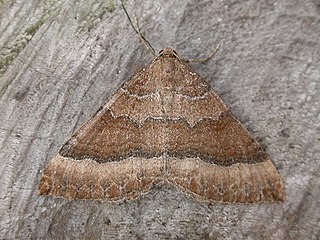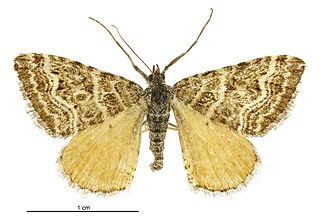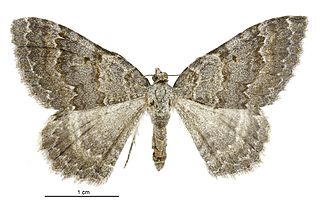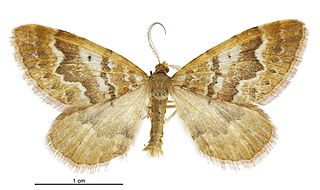Mallow or mallows may refer to:

Acca Larentia or Acca Larentina was a mythical woman, later goddess of fertility, in Roman mythology whose festival, the Larentalia, was celebrated on December 23.

In Roman mythology, Faustulus was the shepherd who found the infant Romulus and his twin brother Remus along the banks of the Tiber River as they were being suckled by the she-wolf, Lupa. According to legend, Faustulus carried the babies back to his sheepfold for his wife Acca Larentia to nurse them. Faustulus and Acca Larentia then raised the boys as their own. Romulus later killed King Amulius of Alba Longa and his brother Remus before founding the city of Rome "in the place where they [Romulus and Remus] had been raised."
Larunda was a naiad nymph, daughter of the river Almo in Ovid's Fasti.
The Roman festival of Larentalia was held on 23 December but was ordered to be observed twice a year by Augustus; by some supposed to be in honour of the Lares, a kind of domestic genii, or divinities, worshipped in houses, and esteemed the guardians and protectors of families, supposed to reside in chimney-corners. Others have attributed this feast in honour of Acca Larentia, the nurse of Romulus and Remus, and wife of Faustulus. During this festival, offerings were made to the dead, usually at altars dedicated to Acca Larentia. A sacrifice was typically offered in the Velabrum, the spot where Acca Larentia is buried. Larentalia was part of a series of ancient Roman festivals and holidays celebrating the end of the old year and the start of the new.

Larentiinae is a subfamily of moths containing roughly 5,800 species that occur mostly in the temperate regions of the world. They are generally considered a subfamily of the geometer moth family (Geometridae) and are divided into a few large or good-sized tribes, and numerous very small or even monotypic ones which might not always be valid. Well-known members are the "pug moths" of the Eupitheciini and the "carpets", mainly of the Cidariini and Xanthorhoini. The subfamily was described by Philogène Auguste Joseph Duponchel in 1845.

Orthonama obstipata, the gem, is a moth of the family Geometridae. The species was first described by Johan Christian Fabricius in 1794. It is a cosmopolitan species. In continental Europe though in the northeast, its range does not significantly extend beyond the Baltic region and it is absent from northern Russia. This well-flying species is prone to vagrancy and able to cross considerable distances of open sea; it can thus be regularly found on the British Isles and even on Iceland.

Larentia clavaria, the mallow, is a moth of the family Geometridae. The species was first described by Adrian Hardy Haworth in 1809. It is found from Siberia in the east to the Iberian Peninsula, North Africa, and the British Isles in the west. In the north it ranges to the Caucasus, Tajikistan and Fennoscandia. In the south it is found the western Mediterranean islands, Italy, the Balkans and Asia Minor. It occurs only locally and is almost always rare. In the Alps, it rises up to 1200 m above sea level.

Helastia is a genus of moths in the family Geometridae erected by Achille Guenée. It is considered by some to be a synonym of Larentia. This genus was redefined and described in 1987 by Robin C. Craw. This genus is endemic to New Zealand.

Larentia is a genus of moths in the family Geometridae first described by Treitschke in 1825.

Larentiini is a tribe of geometer moths under subfamily Larentiinae. The tribe was first described by Philogène Auguste Joseph Duponchel in 1845.

Helastia cinerearia is a moth of the family Geometridae. It is endemic to New Zealand.

Asaphodes beata is a species of moth in the family Geometridae. It is endemic to New Zealand and is a relatively common species that can be found throughout the country in native forest or scrub habitat. It can be distinguished from its close relative Asaphodes adonis by the colour of its hind wings. The larvae of this species feeds on watercress but tends to be inactive during the day. If threatened it will mimic a twig dropping to the ground. The adult moths are on the wing from October to March and are said to be attracted to white rātā. The white markings on the forewing of the adults are variable in appearance.

Xanthorhoe bulbulata is a species of moth in the family Geometridae. It is endemic to New Zealand. It is classified as critically endangered by the Department of Conservation.

Gingidiobora subobscurata is a species of moth in the family Crambidae. It is endemic to New Zealand. This species has been classified as "At Risk, Declining" by the Department of Conservation.

Asaphodes exoriens is a species of moth in the family Geometridae. This species is endemic to New Zealand and has been found in Central Otago. This is an alpine species and frequents open grassy habitat. They can also be found in upland wetland habitat at altitudes between 800 and 1100 m. Adults are on the wing in March.

Asaphodes prasinias is a moth in the family Geometridae. It is endemic to New Zealand and has been found on both the North and South Islands. This species inhabits native forest including beech forest and subalpine scrub. The range of this species has reduced as this species is regarded as being locally extinct in the previously inhabited open non-forest habitats around Invercargill. Adults are on the wing from November to January.

Helastia semisignata is a moth of the family Geometridae. This species is endemic to New Zealand. It was first described by Francis Walker in 1862 and originally named Larentia semisignata.













